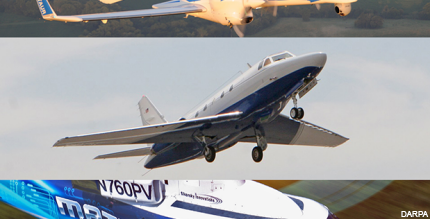Project to add autonomy to existing aircraft takes next step
In Phase II of DARPA's ALIAS program, Sikorsky will demonstrate the ACES system with a Black Hawk helicopter and a fixed-wing aircraft.

Military researchers are moving forward with development of a drop-in system that would bring automation to existing aircraft and allow for smaller crews.
The Defense Advanced Research Projects Agency has awarded Sikorsky Aircraft $9.8 million modification to take the Aircrew Labor In-Cockpit Automation System (ALIAS) program to Phase II, which among other things will prepare the system for flight tests. Sikorsky is to demonstrate the Autonomous Crew Enhancement System (ACES) on a cargo resupply mission using a UH-60L Black Hawk helicopter and perform a full demonstration on a fixed-wing aircraft.
ALIAS, being designed to work via a touch and voice interface, won’t entirely replace crews, but would supplement them, reducing pilots’ workloads and taking over in case of system failures. In addition to reducing the size of the crew, it’s also expected to improve aircraft safety and augment mission performance.
In March, DARPA awarded Phase I contracts to Sikorsky, Aurora Flight Sciences and Lockheed Martin for work on developing interfaces with systems capable of operating the aircraft without constant supervision from the pilot. Phase II, in addition to getting Phase 1 systems ready for flight tests, also is intended to strengthen the human-machine interface and demonstrate the system’s portability on the ground.
With the modification, the total value of the contract is now $22.7 million, with Sikorsky covering about $7.6 million and DARPA $15.1 million.
ALIAS is one of several projects the Pentagon intended to add remote and/or autonomous functions to existing air, land and seagoing vehicles. Last year, Sikorsky and the Army demonstrated flying a Black Hawk helicopter by remote with the Manned/Unmanned Resupply Aerial Lifter (MURAL), a joint project of Sikorsky, the Army Aviation Development Directorate and the Army Utility Helicopters Project Office.
The Marines have tested a tablet-based system that allows them to remotely fly and land K-MAX and MH-6 Little Bird helicopters. The Army’s Autonomous Mobility Appliqué System can turn ground vehicles into an autonomous convoy, and the Navy’s CARACaS sensor and software kit can turn just about any boat into an autonomous or remotely-controlled vessel.
NEXT STORY: Navy, Army teams to take home GCN Awards




